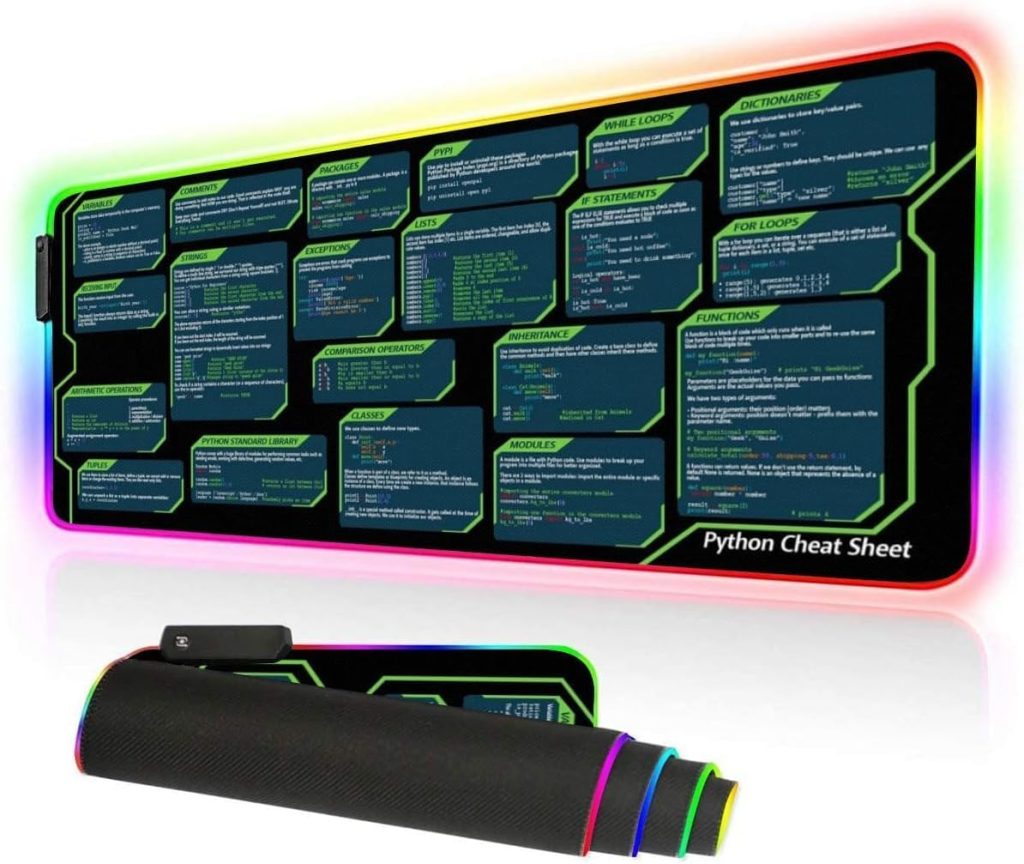
Geospatial data analysis is the process of gathering, displaying, and manipulating imagery, GPS, satellite photography, and historical data, that are tied to a location-based coordinate system. This allows for a better understanding of the geographic context of the data and helps in decision-making processes related to environmental planning, urban planning, resource management, and more.
With the advent of technology and easy access to location-based data, geospatial analysis has become an integral part of various fields such as agriculture, disaster management, and marketing. It involves a variety of techniques and processes designed to handle data this is associated with geographic locations.
Python, with its simplicity and large ecosystem, has become a popular language for geospatial data analysis. It offers several powerful libraries that make it possible to process and analyze geospatial data without having to rely on commercial GIS (Geographic Information Systems) software. Python’s versatility allows for integration with other tools, and its libraries have functionalities that range from reading and writing geospatial data to performing complex geospatial computations and visualizations.
One common operation in geospatial data analysis is reading and writing shapefiles, which are a popular format for storing geometric location and associated attribute information. For example:
import geopandas as gpd
# Reading a shapefile
gdf = gpd.read_file('path_to_shapefile.shp')
# Writing a shapefile
gdf.to_file('path_to_output.shp')
This simple code snippet uses the GeoPandas library to read and write shapefiles. GeoPandas is built on top of Pandas and extends its capabilities to allow for the handling of spatial data.
Geospatial data analysis can range from simple tasks such as mapping the locations of specific points to more complex analyses like identifying areas that are at risk of flooding using digital elevation models. The next sections will dive into the Python libraries available for geospatial data analysis, how to acquire and preprocess geospatial data, methods for visualizing this data, and advanced techniques for deeper analysis.
Python Libraries for Geospatial Data Analysis
Continuing from the basics of reading and writing shapefiles using GeoPandas, there are several other Python libraries that play a important role in geospatial data analysis. Each of these libraries has its unique features and functionalities which are essential for various tasks involved in the analysis process.
GDAL/OGR is one of the most important libraries for reading and writing raster and vector geospatial data formats. It’s a translator library for various geospatial data formats and provides utilities for performing operations on these data. For instance, converting a GeoTIFF file to an ASCII grid can be done with the following code:
from osgeo import gdal
# Open the source GeoTIFF file
src_ds = gdal.Open('path_to_geotiff.tif')
# Convert the file
gdal.Translate('path_to_output.asc', src_ds, format='AAIGrid')
Fiona is another library which is built on top of GDAL/OGR and is used for reading and writing vector data. It’s more Pythonic and easier to use than GDAL/OGR’s own Python bindings. Here’s an example of how to read a shapefile using Fiona:
import fiona
# Open the file
with fiona.open('path_to_shapefile.shp', 'r') as shapefile:
for feature in shapefile:
print(feature)
Shapely is a library for manipulation and analysis of planar geometric objects. It’s based on the widely deployed GEOS (the engine of PostGIS) and JTS (from which GEOS is ported) libraries. It can be used to perform tasks such as finding the area of a polygon, length of a line, or the distance between geometries. Here’s an example of creating a point and a line and finding the distance between them:
from shapely.geometry import Point, LineString # Create a Point object point = Point(0, 0) # Create a LineString object line = LineString([(1, 1), (2, 2), (3, 3)]) # Calculate distance from point to line print(point.distance(line))
Pyproj is a library that interfaces with PROJ (a standard for cartographic projections and coordinate transformations). It allows for transformations between different spatial reference systems. For example, to transform coordinates from WGS84 to UTM zone 33N:
from pyproj import Proj, transform # Define the projection for WGS84 wgs84 = Proj(init='epsg:4326') # Define the projection for UTM zone 33N utm = Proj(init='epsg:32633') # Convert WGS84 coordinates to UTM x1, y1 = -5.625, 40.6892 x2, y2 = transform(wgs84, utm, x1, y1) print(x2, y2)
These libraries form the backbone of geospatial data analysis in Python. They provide robust tools for reading, writing, transforming, and performing computations on geospatial data. In addition to these core libraries, there are a high number of other Python packages that support specific aspects of geospatial data analysis which will be explored in the following sections.
Data Acquisition and Preprocessing
Before we can begin analyzing geospatial data, we must first acquire it. Data acquisition can involve collecting new data through surveys or GPS devices, or it can involve sourcing existing data from various providers. Once we have our data, preprocessing is an important step to ensure that our data is clean, properly formatted, and ready for analysis.
Data preprocessing may involve several steps such as:
- Cleaning the data to remove any inaccuracies or inconsistencies
- Converting data into the correct format or data type
- Geocoding addresses to retrieve their corresponding geographical coordinates
- Projecting the data onto a specific coordinate system
For example, let’s say we have a CSV file containing addresses that we want to geocode. We could use the geopy library to achieve this:
from geopy.geocoders import Nominatim
# Initialize Nominatim API
geolocator = Nominatim(user_agent="geoapiExercises")
# Function to geocode an address
def geocode_address(address):
try:
location = geolocator.geocode(address)
return (location.latitude, location.longitude)
except:
return (None, None)
# Geocode each address in the CSV file
import pandas as pd
df = pd.read_csv('addresses.csv')
df['latitude'], df['longitude'] = zip(*df['address'].apply(geocode_address))
This code reads a CSV file into a pandas DataFrame, applies the geocode_address function to each address, and adds the resulting latitude and longitude as new columns in the DataFrame.
Another common preprocessing task is projecting geospatial data onto a different coordinate system. This can be done using the pyproj library:
from pyproj import CRS, Transformer
# Define source and target coordinate systems
source_crs = CRS.from_epsg(4326) # WGS84
target_crs = CRS.from_epsg(3857) # Web Mercator
# Initialize transformer
transformer = Transformer.from_crs(source_crs, target_crs)
# Function to transform coordinates
def transform_coordinates(lon, lat):
return transformer.transform(lon, lat)
# Applying the transformation to our DataFrame
df['mercator_x'], df['mercator_y'] = zip(*df.apply(lambda x: transform_coordinates(x['longitude'], x['latitude']), axis=1))
This code snippet defines the source and target coordinate systems using their EPSG codes, initializes a Transformer object, and applies the transformation to each row of the DataFrame, adding new columns for the transformed coordinates.
Proper data acquisition and preprocessing are critical steps in geospatial data analysis that set the stage for subsequent visualization and analysis tasks. These Python tools and libraries provide powerful capabilities to efficiently prepare your geospatial data for insightful analysis.
Geospatial Data Visualization
Once the data is acquired and preprocessed, the next step in geospatial data analysis is visualization. Visualizing geospatial data allows us to see patterns, trends, and relationships that may not be evident in raw data. Python offers several libraries for visualizing geospatial data, such as Matplotlib, Plotly, and Folium.
Matplotlib is a widely used Python library for creating static, interactive, and animated visualizations. It can be combined with GeoPandas to plot geospatial data on maps. For instance, to plot a simple map of geometries from a GeoDataFrame:
import matplotlib.pyplot as plt # Assuming 'gdf' is a GeoDataFrame containing geometries gdf.plot() # Show the plot plt.show()
For more interactive plots, Plotly can be used. It allows creating web-based interactive maps. Here’s how to create an interactive scatter plot on a map using Plotly:
import plotly.express as px # Assuming 'df' is a DataFrame with 'lat' and 'lon' columns for latitude and longitude fig = px.scatter_geo(df, lat='lat', lon='lon') # Show the figure fig.show()
Another powerful tool for creating interactive maps is Folium. It builds on the strengths of Leaflet.js and is great for creating choropleth maps, which can represent variations in data across geographical regions. Here’s how to add markers to a map using Folium:
import folium
# Create a base map
m = folium.Map(location=[45.5236, -122.6750], zoom_start=13)
# Add a marker for each record in the DataFrame
for _, row in df.iterrows():
folium.Marker(location=[row['latitude'], row['longitude']]).add_to(m)
# Display the map
m.save('map.html')
These are just a few examples of the many ways Python and its libraries can be used to visualize geospatial data. Advanced visualizations might include heatmaps, time series animations, and 3D plots, which are also possible with Python’s rich ecosystem of visualization tools.
Overall, visualizing geospatial data not only aids in understanding and interpreting the data but also helps in communicating findings to others. With Python’s diverse range of libraries, creating informative and attractive visualizations is accessible for anyone working with geospatial data.
Advanced Geospatial Analysis Techniques
Advanced Geospatial Analysis Techniques go beyond the basics of data visualization and manipulation, allowing for more in-depth understanding and predictions based on spatial data. Python, with its extensive libraries, offers a myriad of advanced techniques such as spatial interpolation, machine learning integration, network analysis, and more.
One such advanced technique is spatial interpolation which is used to estimate unknown values at specific locations based on known values at surrounding locations. A common method of spatial interpolation is Kriging, which can be implemented in Python using the PyKrige library. Here’s an example:
from pykrige.ok import OrdinaryKriging
import numpy as np
# Known data points (x-coordinates, y-coordinates, and values)
data = np.array([[0, 0, 0.5], [1, 1, 0.6], [2, 2, 0.8], [3, 3, 0.9]])
# Create an Ordinary Kriging object
OK = OrdinaryKriging(data[:, 0], data[:, 1], data[:, 2], variogram_model='linear')
# Estimate values at unknown locations
gridx = np.arange(0.0, 3.5, 0.5)
gridy = np.arange(0.0, 3.5, 0.5)
z, ss = OK.execute('grid', gridx, gridy)
Machine learning can also be applied to geospatial data to predict outcomes such as land use changes or to classify satellite imagery. One could use the scikit-learn library to train a model on spatial data. For instance:
from sklearn.ensemble import RandomForestClassifier from sklearn.model_selection import train_test_split # Assuming 'X' is a DataFrame with feature columns and 'y' are the labels X_train, X_test, y_train, y_test = train_test_split(X, y, test_size=0.3) # Initialize the model rf = RandomForestClassifier(n_estimators=100) # Train the model rf.fit(X_train, y_train) # Predict on test data predictions = rf.predict(X_test)
Network analysis is another advanced technique that involves the analysis of complex networks such as road networks for route optimization or utility networks for outage management. Using libraries like NetworkX or OSMnx (which extends NetworkX for working with OpenStreetMap data), we can model and analyze such networks. Here’s a snippet using OSMnx:
import osmnx as ox
# Get the network graph for a location
G = ox.graph_from_place('Manhattan Island, New York City, New York, USA', network_type='drive')
# Find the shortest path between two points
origin_node = ox.get_nearest_node(G, (40.7484, -73.9857)) # Empire State Building
destination_node = ox.get_nearest_node(G, (40.7612, -73.9776)) # The Museum of Contemporary Art
shortest_path = ox.shortest_path(G, origin_node, destination_node)
These are just a few examples of the advanced geospatial analysis techniques possible with Python. The ability to combine these techniques with other data sources and types makes Python an excellent choice for complex geospatial data projects that require deep analysis and predictive modeling.
Overall, whether it is through spatial interpolation to fill in gaps in data, machine learning to predict future trends, or network analysis to optimize routes and manage resources, Python provides the tools necessary for sophisticated geospatial data analysis.






